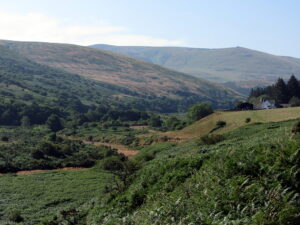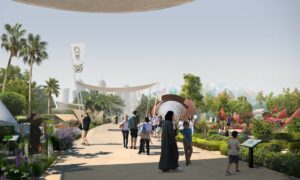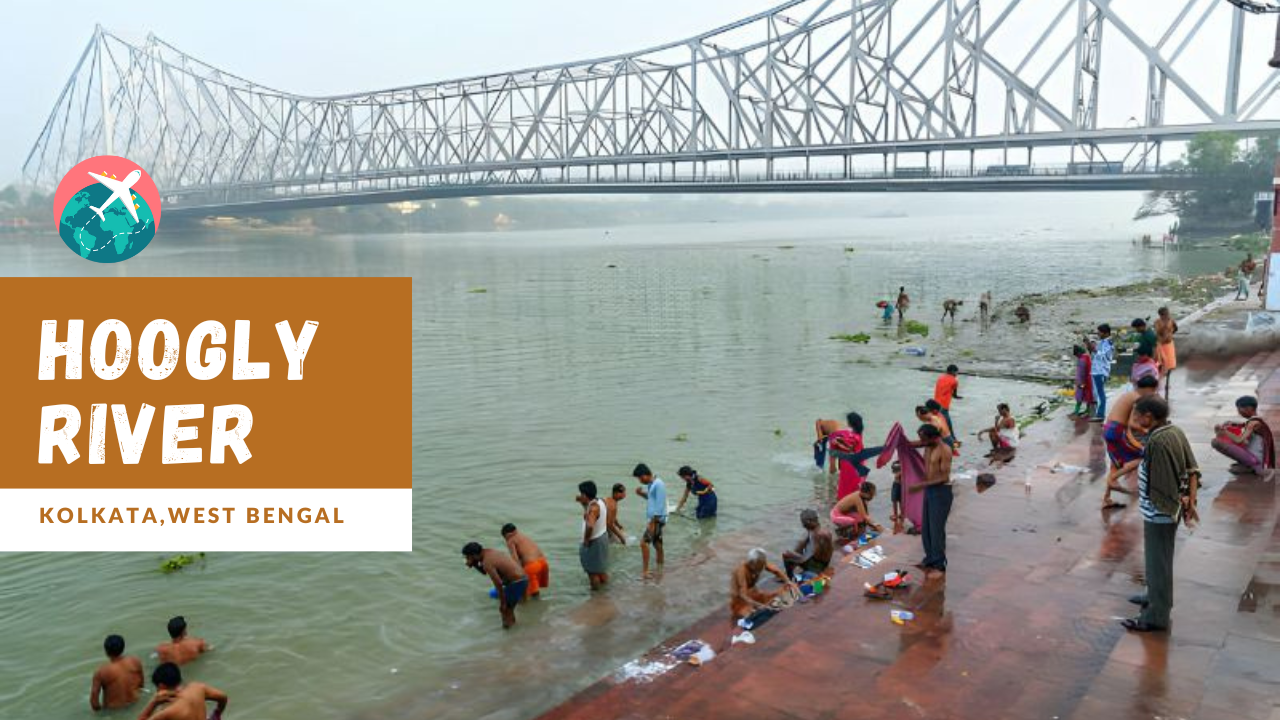
The Ganga Bhagirathi Hooghly River System is a vast river that provides water throughout the year for the plains of West Bengal. The river length is 260 km, with a depth of about 117m. It is a distributary and sub-river of the Ganges River. The Hooghly River Tunnel is known across India’s geographical landscape as the East-West Metro Tunnel. This is one of the most extensive underwater tunnels in the whole country. The Hooghly River tunnel is about 35m deep beneath the river. It will be constructed using Afcons’s infrastructure in 2021. The tunnel is an engineering marvel that is 520 meters long.
History of the Hooghly River
The Hooghly River in India holds significant historical and cultural importance. Originally considered the primary route of the Ganges River, it was revered as a sacred waterway by Hindus, with numerous temples and pilgrimage sites established along its banks. Flowing generally south for about 160 miles, it plays a critical role in providing access to Kolkata (Calcutta) from the Bay of Bengal.
In the seventeenth century, European traders arrived, and the river became a key trading route. As British influence grew, so did efforts to control and utilize the Hooghly, including the introduction of steamships in the 1800s. The lower reaches of the river are fed by several tributaries, including the Ajay, Damodar, Rupnarayan, and Haldi rivers, originating from the Chota Nagpur plateau area.
The river played a vital role in the economic and cultural life of the region but also faced challenges such as pollution and declining water levels. Its significance remains, with millions participating in annual pilgrimages to its sacred sites. However, the Ganga Bhagirathi Hooghly River System pollution level is rapidly increasing every year. This creates serious environmental concerns and health issues for the pilgrims performing sacred rituals on the shallow river banks.
8 Hooghly River Places to Visit
The Ganga Bhagirathi Hooghly River System is also home to many other places for tourism. Some popular attractions along the Hooghly River include the Vidyasagar Setu, Prinsep Ghat, Millennium Park, and more. These sites offer visitors a chance to explore the rich history and heritage of the region while enjoying scenic views of the river. Let us take a ferry ride down the Ganga Bhagirathi Hooghly River System and explore the 8 Hooghly River places to visit.
1. The Second Hooghly Bridge (Vidyasagar Setu)
The Second Hooghly Bridge also goes by another name, Vidyasagar Setu. It is located at NH12 in Kolkata, within West Bengal (700022), India. This prominent architectural structure was constructed in 1992. After a successful construction phase that year, it was swiftly introduced to the public. The bridge links Kolkata and Howrah; it is a cable-stayed bridge 823 meters long, linking two highly populated cities. The Hooghly River Bridge was India’s first and longest bridge. But that’s not all; it’s one of Asia’s longest bridges.
It is an excellent destination for those who enjoy the marvel of modern architecture and its beauty. It offers serenity and calmness when watched from a more comprehensive perspective.
Visiting Hours: You can visit Hooghly River Bridge 24 hours a day, but it offers the best view at night.
2. Prinsep Ghat
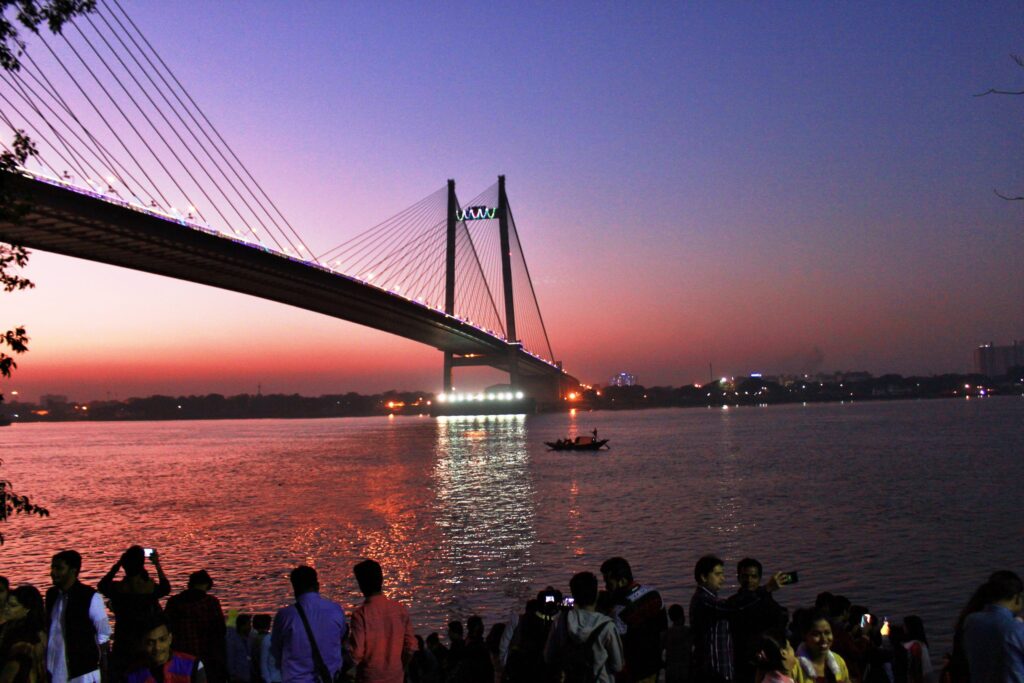
Prinsep Ghat is a famous tourist attraction for those who visit the Hooghly River. It was built to honor the memory of James Prince. Tourist visitors can affordably hire a boat to explore the river. The boat riding along the river and the beautiful view of the sunset leave a long-lasting impact on the tourists’s minds.
You can visit the Prinsep Ghat at night, as that is the best time.
3. Millennium Park
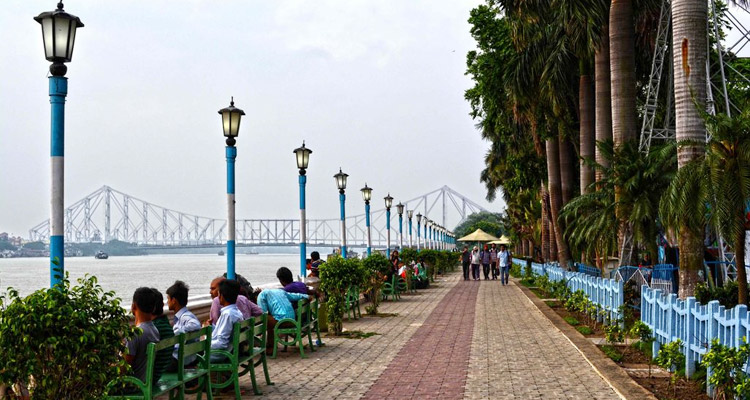
Near the fantastic Prinsep Ghat is a beautiful millennium park on the river’s bank. It has lovely gardens and rides for children’s amusement. The most important thing about the park is the precious and priceless view of the river it offers.
4. Chandanagar Museum
Chandanagar Museum was established by French Prime Minister Pompidre and Indian Prime Minister Lal Bahadur Shastri in the 19th century. It is a dream destination for many Indians and foreign tourists interested in the rich culture of French India. It is one of the oldest and best museums in Kolkata.
It is opposite Vivekananda Mandir, Strand Rd., Barabazar, Chandanagar, West Bengal, and is a lovely spot for those who sincerely appreciate history.
Jagaddhatri Puja is the most important thing to do at Chandanagar Museum. This puja was held in November, following the completion of Durga Puja. This grand event attracts hundreds of thousands of people who gather here for participation and celebration.
Visiting Hours: The visiting hours are strictly confined to Tuesdays and Fridays between 2 and 5 p.m.
5. Lahiri Babar Ashram
Lahiri Babar Ashram is also known as Aadharaloy. It is a famous Hindu temple in Rajhat, Hooghly district, Bandel-Pandua. The temple is also a well-known and renowned location for the people of Kolkata to go out on a picnic.
This place is a huge attraction for those who follow Hinduism. Many people visit the temple because of its religious and historical importance.
Visiting hours: The Lahiri Babar Ashram welcomes visitors seven days a week. The doors are open from 10 a.m. to 12 p.m. and 4 p.m. to 6 p.m. Entry to this serene place doesn’t cost you a dime. However, there are some strict guidelines for visitors to abide by. For example, male guests should keep their heads uncovered, while females are exempt from this requirement.
6. Antpur Radha Govind Ji Temple
Antpur Radha Govind Ji Temple is a Hindu temple in Antpur, West Bengal, India. Most people visit the temple for spiritual interests, while the exquisite carvings and satisfactory history attract others.
The Antpur Radha Govind ji Temple was constructed by Shri Krishna Ram Mitra, the Diwan of Bardhaman Raj, in 1786. The temple is a dream destination for many Hindus and tourists. Its rich history and beautiful architecture attract millions of people everywhere.
Visiting hours: You can see Antpur Radha Govind Ji all seven days a week. The visiting hours span from 11:15 a.m. to 1:00 p.m..
7. Kamarpukur
Kamarpukur is a small and beautiful village. It is located in the Hooghly district. It houses around 3500 residents. Its scenic beauty and extensive green fields rightfully make it famous.
It is the birthplace of Gadadhar Chattopadhyay, also known as Sri Ramakrishna Paramahansa.
Besides its green fields, it is famous for its prosperous cottage industry. Its well-established cottage industries play a significant role in the locale’s economy.
It is only about 100 kilometers from Kolkata’s city center, so a trip to Kamarpukur takes roughly three hours by road.
Visiting hours: For visitors looking to delight in everything this serene paradise offers, early morning (6 a.m.–11 a.m.) or late afternoon (4 p.m.–9 p.m.) hours are highly recommended.
8. Babu Ghat
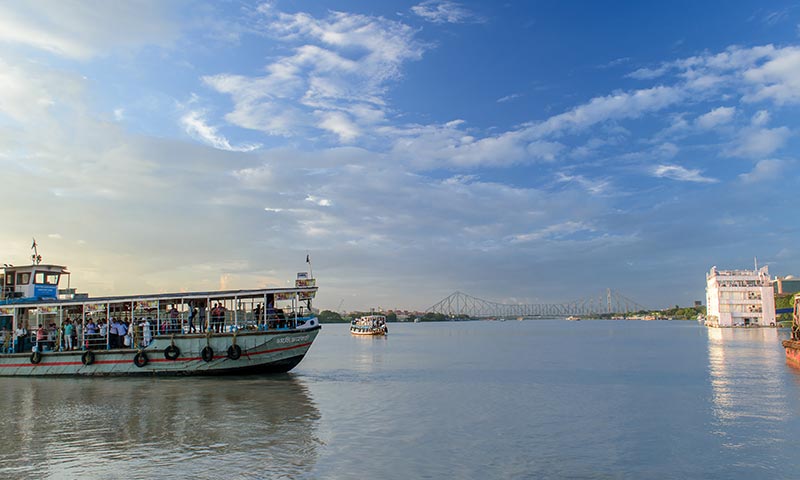
Babu ghat is also known as Babu Raj Chandra ghat. It is the first name of Babu. Rani Rashmoni built it. She was Raj Chandra Ghat’s wife and made this ghat in memory of her husband.
It is famous for its astonishing colonial structure and related history. Babu Ghat is located at Strand Rd., B.B.D. Bagh, Kolkata, West Bengal, 700021, India.
Visiting hours: The best time to visit Babu Ghat is 5 p.m.; it is hugely populated at that time, making it more exciting and enjoyable.
Final Words
Despite its religious and cultural importance, the Ganga Bhagirathi Hooghly River System has played a significant role in shaping the history and heritage of Kolkata. I hope this tour guide has provided you with valuable information about the Hooghly River System and its historical significance. Don’t miss the opportunity to witness this iconic colonial structure during your visit to Kolkata.
Stay tuned for more adventure guides from Salam Travellers.

